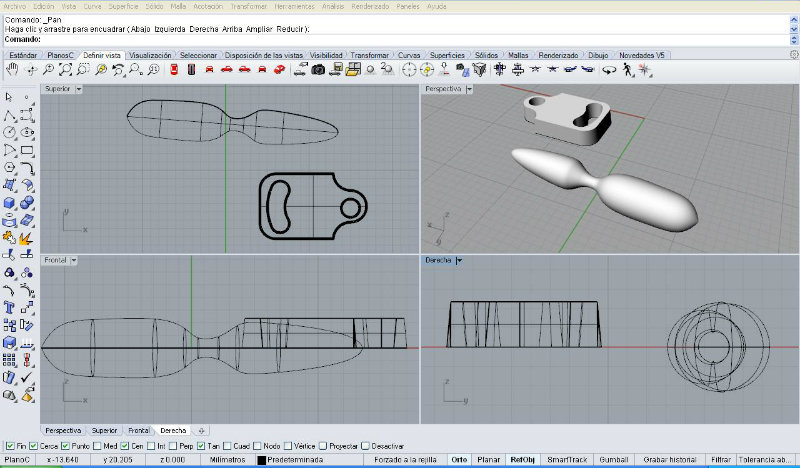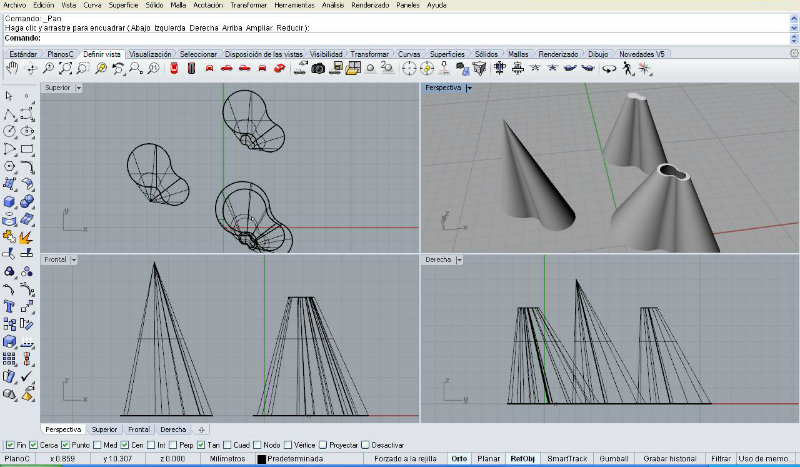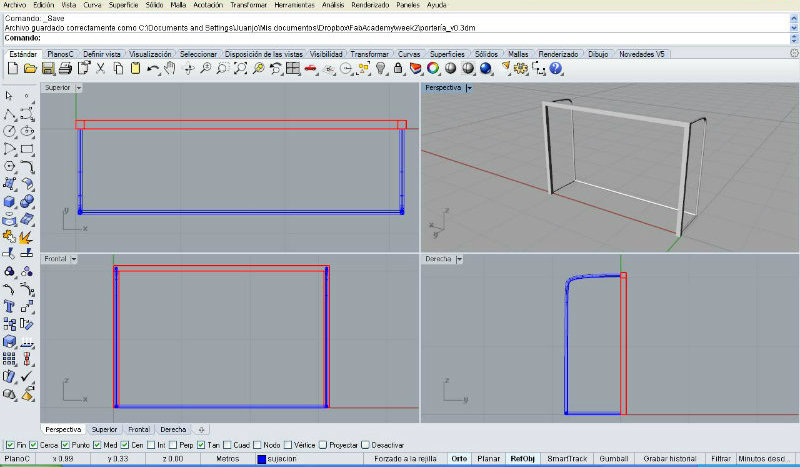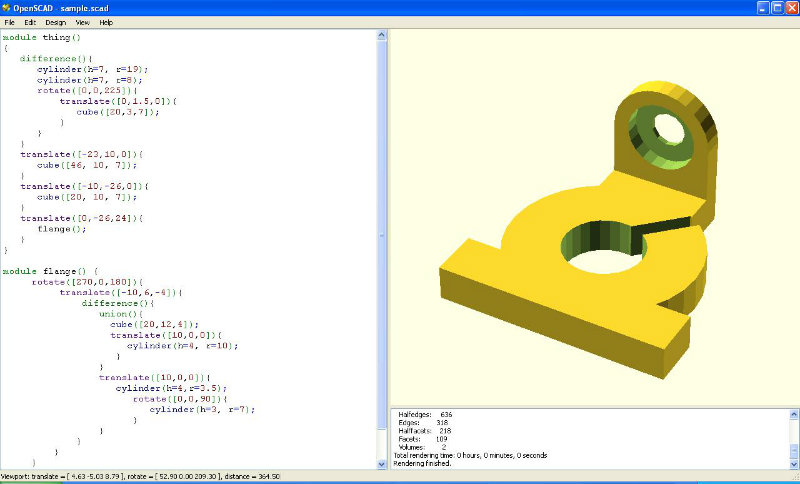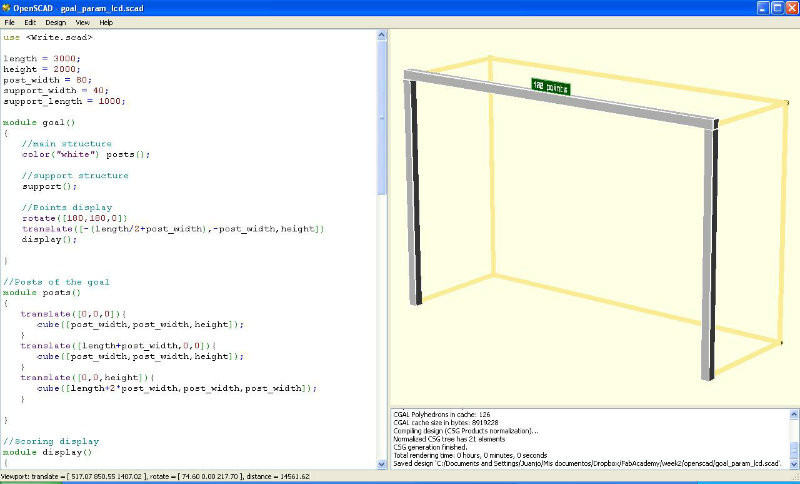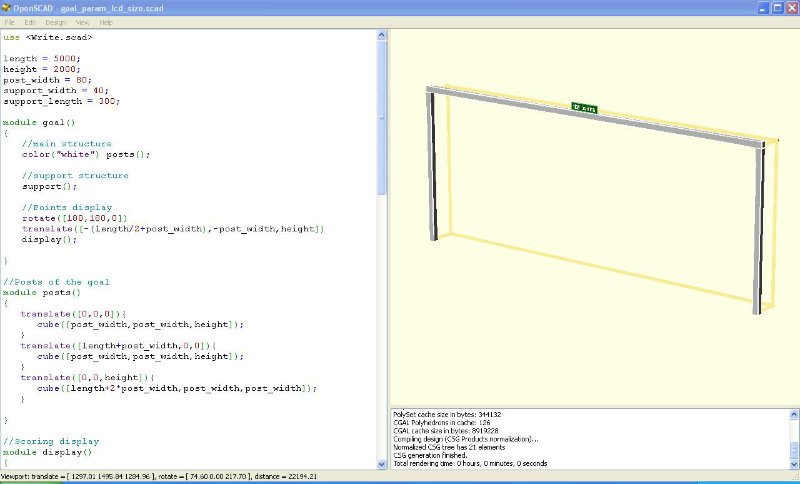Week 2. Computer aided design
This second week of the Fab Academy we learned about the different possibilities for the computer-aided design in 2D and 3D. The objective for this week was to test as many 2D and 3D design software as possible in order to evaluate the differences between them and be able in the future to choose the best one depending on our necessities.
From the different possibilities mentioned during the class, I tested six different softwares: Gimp and Inkscape for 2D design and FreeCAD, SketchUp, Rhinoceros and OpenSCAD for 3D. My initial idea was to do a fast tutorial about each software, and with those I feel more comfortable with model my final project.
 Gimp
Gimp
For 2D design I decided to test two different solutions: one based on raster drawing and the other one based on vector drawing. For 2D raster design I decided to use Gimp, as it is free, compatible with Windows (the OS I am using) and quite popular.
I did some tests and sketches with it, but in my opinion, I do not see too much potential to do a model of my final project. On the other hand, I see it very useful for image editing.
 Inkscape
Inkscape
The second software I decided to test for 2D design was Inkscape. The reasons I selected it were quite similar to Gimp: it is Windows compatible and free. In the past I had some experiences with Corel Draw, and both softwares are quite similar, so for me the learning period of this tool was quite fast.
The combination of the use of layers, predefined shapes and handwriting and sketching makes it a really powerful tool not only for 2D design but also for sketching and diagramming. For me Inkscape is a great discovery and I am sure it is one of the tools I will use in my day by day activities and not only during the Fab Academy period.
 SketchUp
SketchUp
As it is a free software for particular use and belonged to Google, it is very popular, so I decided to test SketchUp as the first 3D design software. It is also very popular as it is very easy to start to draw with it.
I watched some of the getting started videos in its tutorial webpage, and I did some examples. In my opinion it is a very useful software for beginners and for rapid sketching, but for me it is not the most appropriate one when you are building more complex designs.
 Rhinoceros
Rhinoceros
After Sketchup I tested Rhinoceros. This is a non-free software, but you can download a trial version from the webpage and there is a license in the FabLab, so it can be used along the development of my project.
I did some of the guides you can find in the internet, and I did some things I consider quite funny considering the fact that it was the first time I used a 3D design software. You can see some of the tests I did during my learning period in the figures below.
|
|
|
Maybe due to the similarities with AutoCad, for me it was quite fast to learn and to use Rhinoceros, so I decided to use it to model my final project. If you remember from previous week, my idea was to build an intelligent football goal. In the next pictures you can see the model I have made using Rhinoceros and download it here.
|
|
|
Snapshot of the 3D design with Rhino of my possible final project. |
 FreeCAD
FreeCAD
After Rhinoceros, I realized that the fact that it is not a parametrizable software: once you have a complex design and you want to modify any parameter (e.g. the length of the goal), you need to redo almost the full design. That make me to test some parametric design system, and I selected FreeCAD because it combines GUI with scripting design.
I didn't find to much tutorials interesting for me, so I make some tests by myself. The beginning with this software was harder, but the possibilities to use it also in command line is very attractive for me. At this first instance I am not going to use it to model my final project as it will take more time to learn how to use it, but in the future I will try to spend more time with it to see the real potential.
 OpenSCAD
OpenSCAD
Finally it was only remaining to test a 3D design software fully based on programming, so as I need it to run on Windows, I choose OpenSCAD.
The learning period with this tool is quite longer and harder compared with a traditional software based on a GUI environment. The main problem for me was to know all the different commands you can use and how to use them, but thanks to the very good user manual it was easier. It was also very useful for me a tutorial I found in Hackaday.com.
On the other hand, once you get used to it, you really see the potential of these kind of tools, specially when you need to modify any parameter in a complex design.
|
|
|
Snapshot of some tests with OpenSCAD. |
After learning the basic concepts of OpenSCAD, I decided to make a model of my final project with it. I divided it into three different modules: the posts, the support structure and the LCD display for the scoring.
To define the structure of the goal, I used parameters to define its size. In this way, just modifying these parameters you have and updated design of the goal. Yo can see in the images below the goal designed with the same script but using different values for the size.
To include the letters of the LCD display, there is no specific command in OpenSCAD, so I searched thorugh the internet the possibility to include them. I finally downloaded a OpenSCAD library which allows you to add text to your 3D objects in a quite easy way. You can download it from the Makerbot forum. The design of the goal in OpenSCAD can be downloaded here
|
|
|
Design of the goal with OpenSCAD. |
|
|
|
Design of the goal with OpenSCAD modifying size parameters. |
Conclusions
During this week I had the chance to test several systems to design in 2D and 3D, covering all the different possibilities mentioned during the weekly lesson.
For 2D I tested a software based on raster design and a second one based on vectorial designed, and I found more useful the one based on vectorial design.
About 3D design softwares I went through 4 different ones, starting from the ones based on GUIs and easier to learn, and finishing with a fully scripting parametric one. It is obvious that it is faster to learn to use the ones based on GUIs, but when I tested OpenSCAD, I really see the potential of these solutions.
The first moments with OpenSCAD are a bit frustrating, but if you have some programming background, I am sure you will soon see the potential of this kind of software. During the class I was very amazed about some of the features and possibilities of kokopelli and antimony due to its parametrization and scripting of the design, and I want also to test them. Anyway, at this moment, in my computer I have Windows installed as OS, so it is not feasible to test these two solutions. In the future I would like to make a partition in my hard disk to install Ubuntu and test also these two alternatives.

